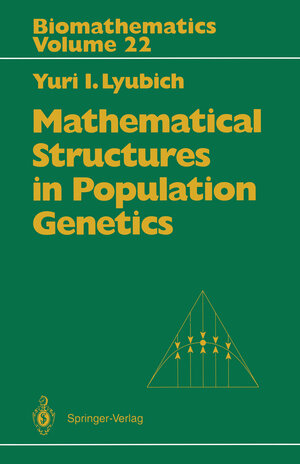
×
![Buchcover ISBN 9783642762130]()
Mathematical Structures in Population Genetics
von Yuri I. Lyubich, herausgegeben von Ethan Akin, übersetzt von D. Vulis und A. KarpovMathematical methods have been applied successfully to population genet ics for a long time. Even the quite elementary ideas used initially proved amazingly effective. For example, the famous Hardy-Weinberg Law (1908) is basic to many calculations in population genetics. The mathematics in the classical works of Fisher, Haldane and Wright was also not very complicated but was of great help for the theoretical understanding of evolutionary pro cesses. More recently, the methods of mathematical genetics have become more sophisticated. In use are probability theory, stochastic processes, non linear differential and difference equations and nonassociative algebras. First contacts with topology have been established. Now in addition to the tra ditional movement of mathematics for genetics, inspiration is flowing in the opposite direction, yielding mathematics from genetics. The present mono grapll reflects to some degree both patterns but especially the latter one. A pioneer of this synthesis was S. N. Bernstein. He raised-and partially solved- -the problem of characterizing all stationary evolutionary operators, and this work was continued by the author in a series of papers (1971-1979). This problem has not been completely solved, but it appears that only cer tain operators devoid of any biological significance remain to be addressed. The results of these studies appear in chapters 4 and 5. The necessary alge braic preliminaries are described in chapter 3 after some elementary models in chapter 2.



